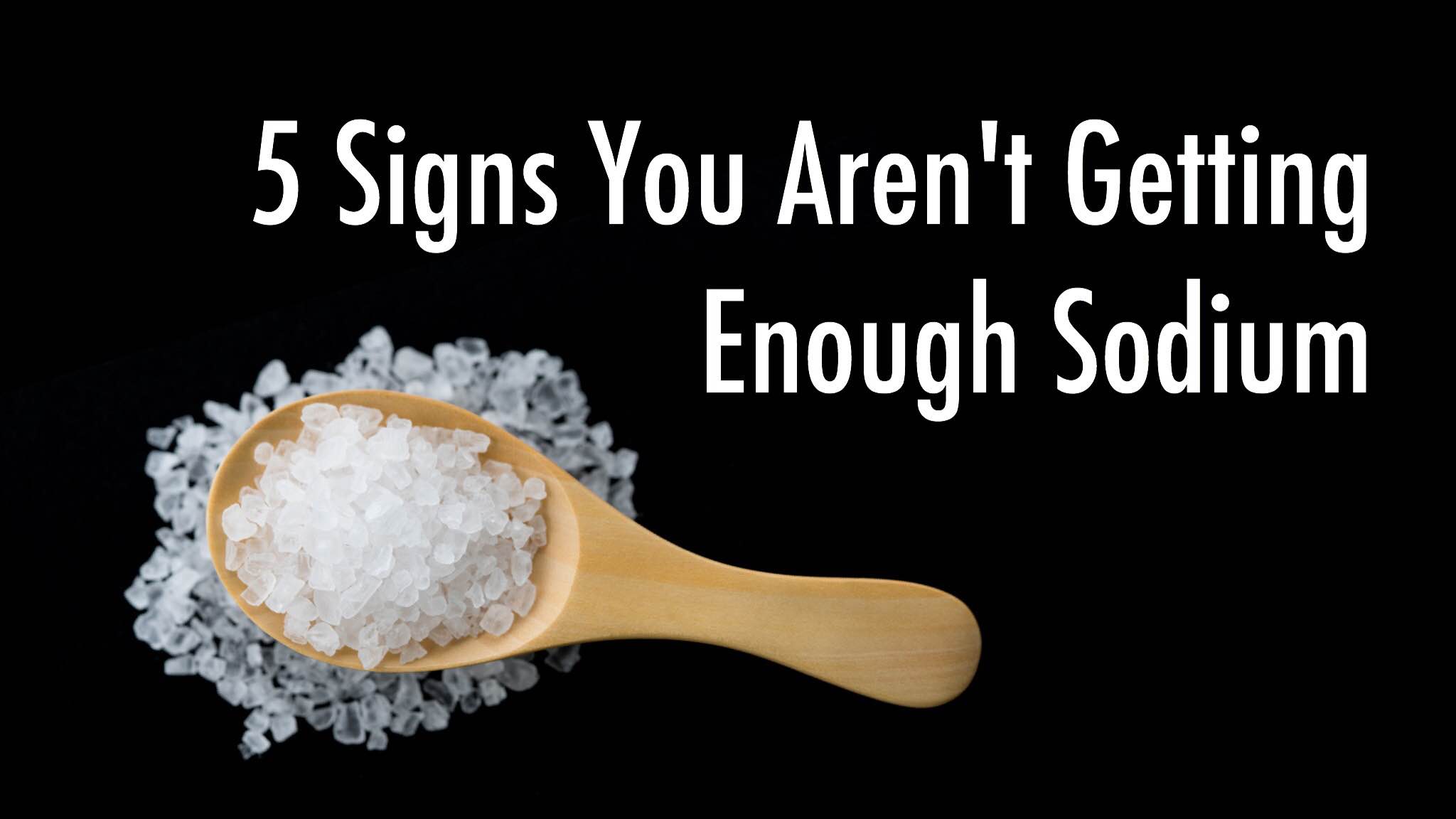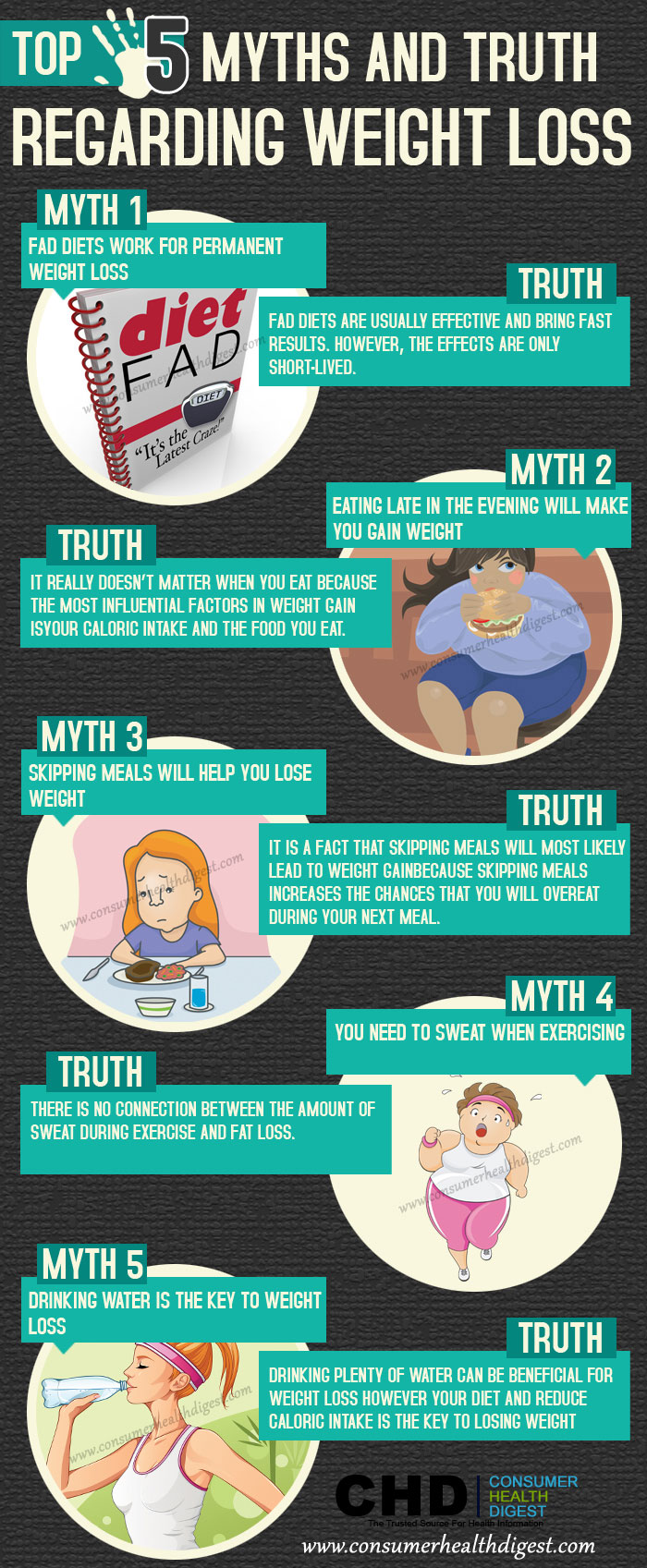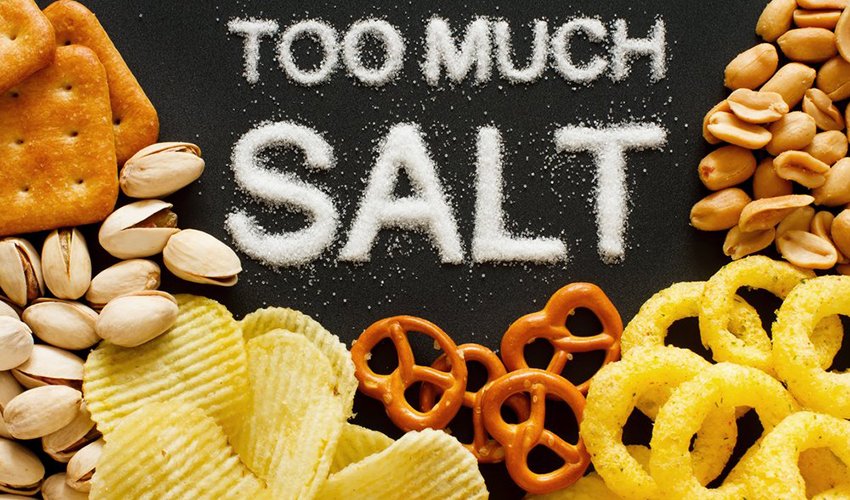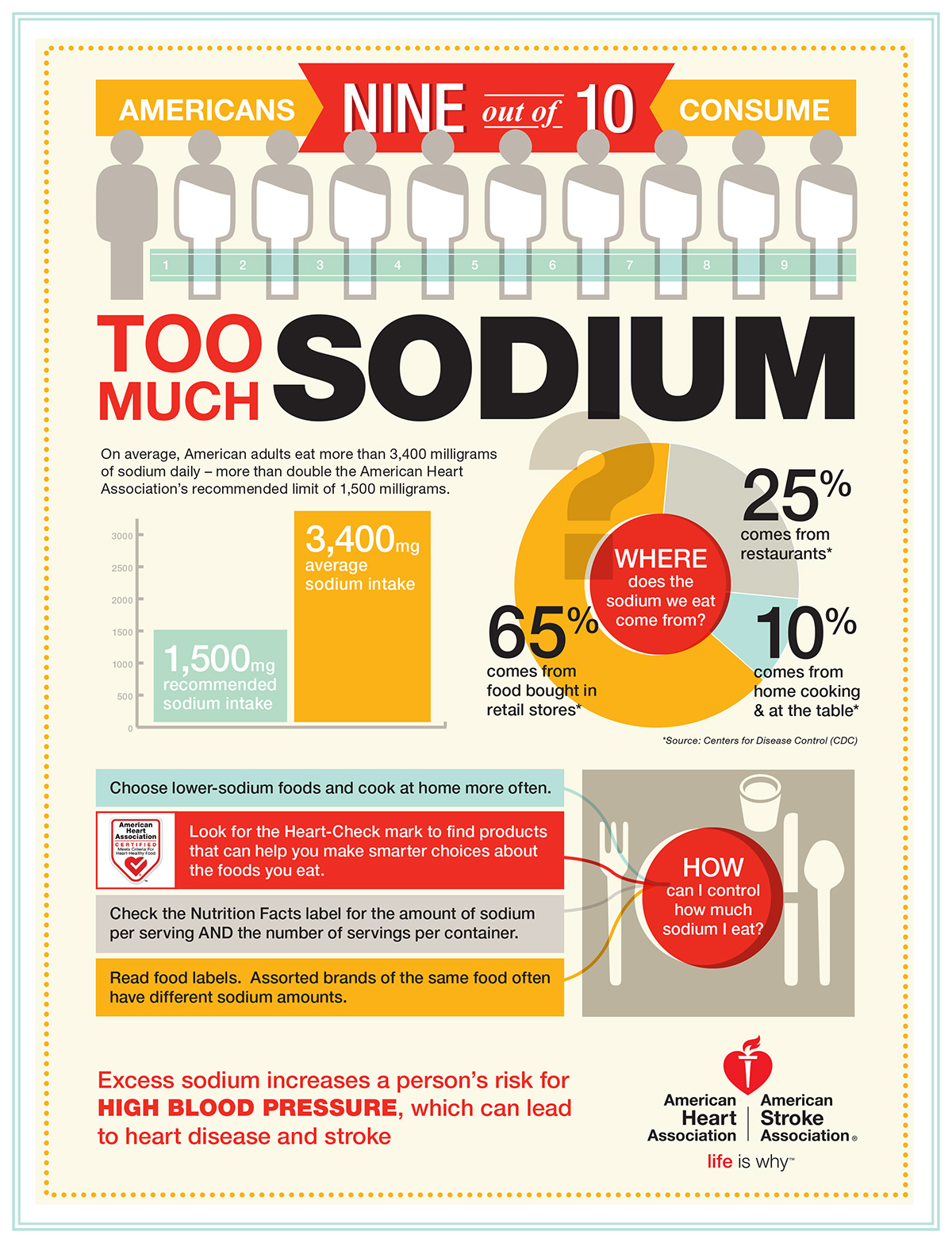Understanding Sodium: What is it and Why is it Important?
Sodium is an essential mineral that plays a crucial role in many bodily functions, including fluid balance, nerve function, and muscle contraction. While sodium is necessary for our health, consuming too much of it can lead to health issues such as high blood pressure and heart disease. The American Heart Association recommends no more than 2,300 milligrams (mg) of sodium per day, with an ideal limit of 1,500 mg for most adults, especially those with high blood pressure.
Sodium and salt are often used interchangeably, but they are not the same thing. Salt is a compound made up of sodium and chloride, and it’s the primary source of sodium in our diet. While sodium is an essential nutrient, most people consume far more than they need, primarily due to the high sodium content in processed and restaurant foods.
Balancing sodium intake is crucial for weight loss and overall health. Consuming too much sodium can lead to water retention, which can mask weight loss progress and increase the risk of health issues. By understanding the role of sodium in the body and how to balance sodium intake, readers can make informed decisions about their diet and support their weight loss goals.
The Connection Between Sodium and Weight Loss: Debunking Myths
There are many misconceptions about sodium and weight loss, including the idea that sodium causes water retention and weight gain. However, research has shown that sodium intake does not have a significant impact on weight loss or gain in healthy adults. While consuming large amounts of sodium can lead to fluid retention, this is typically temporary and does not result in long-term weight gain.
One common myth is that low-sodium diets are always better for weight loss. However, it’s important to balance sodium intake with other essential nutrients. A diet that is too low in sodium can lead to nutrient deficiencies and other health issues. Additionally, consuming too little sodium can actually make it harder to lose weight, as sodium plays a crucial role in fluid balance and can affect metabolism.
Another misconception is that all processed foods are high in sodium. While it’s true that many processed foods contain high levels of sodium, there are also many low-sodium options available. By reading food labels and choosing products with lower sodium content, it’s possible to enjoy processed foods in moderation while still maintaining a healthy diet.
In order to debunk these myths and better understand the connection between sodium and weight loss, it’s important to focus on evidence-based research and avoid making assumptions based on anecdotal evidence or outdated information.
How Sodium Affects Your Body: The Science Behind It
Sodium plays a crucial role in many physiological processes in the body, including fluid balance, nerve function, and muscle contraction. When we consume sodium, it helps to regulate the amount of water in our bodies and maintain a healthy balance of electrolytes.
However, consuming too much sodium can have negative effects on the body. High sodium intake can cause the body to retain excess fluid, leading to bloating and weight gain. Over time, this can also lead to health issues such as high blood pressure and heart disease.
When we consume sodium, our bodies release a hormone called aldosterone, which helps to regulate sodium and potassium levels in the body. However, when we consume too much sodium, our bodies produce more aldosterone, which can lead to high blood pressure and other health issues. Additionally, high sodium intake can cause the heart to work harder, leading to increased strain on the cardiovascular system.
In order to maintain a healthy balance of sodium in the body, it’s important to limit processed and packaged foods, which often contain high levels of sodium. Instead, focus on whole, fresh foods such as fruits, vegetables, and lean proteins. By balancing sodium intake with other essential nutrients, it’s possible to support overall health and well-being.
The Role of Sodium in a Healthy Diet: Balancing Intake
While sodium is an essential nutrient for the body, consuming too much of it can have negative effects on health and weight loss efforts. In order to balance sodium intake in a healthy diet for weight loss, it’s important to be aware of the sources of sodium in your diet and take steps to reduce intake.
One of the best ways to reduce sodium intake is to cook at home using fresh, whole foods. Processed and packaged foods often contain high levels of sodium, so by preparing meals from scratch, you can have more control over the amount of sodium in your diet. When cooking, try using herbs and spices to add flavor instead of salt. Additionally, look for low-sodium versions of your favorite condiments and sauces.
Reading food labels is also an important part of balancing sodium intake. Look for products that contain less than 5% of the daily value of sodium per serving. Be aware that some foods may be labeled as “low-sodium” but still contain high levels of sodium, so it’s important to read the label carefully and do your research.
When eating out, it can be more challenging to control sodium intake. However, there are steps you can take to reduce sodium. Ask for dressings and sauces on the side, and choose grilled or baked options instead of fried. Additionally, many restaurants now offer low-sodium options, so be sure to ask your server for recommendations.
By taking these steps to balance sodium intake in a healthy diet for weight loss, you can support overall health and well-being while still enjoying delicious, flavorful foods.
Real-Life Examples: Low-Sodium Meal Ideas for Weight Loss
Balancing sodium intake is an important part of a healthy diet for weight loss, but it can be challenging to know where to start. Here are some real-life examples of low-sodium meal ideas that can support weight loss:
Breakfast: Avocado and Egg Toast
- 1 slice whole grain bread
- 1/2 avocado, mashed
- 1 egg, cooked to preference
- Sprinkle of black pepper
This breakfast is not only low in sodium but also packed with healthy fats and protein to keep you full and satisfied. Simply toast the bread, mash the avocado, and cook the egg to your liking. Top with a sprinkle of black pepper for flavor.
Lunch: Grilled Chicken and Veggie Wrap
- 1 whole grain tortilla
- 3 oz grilled chicken breast
- 1/4 cup sliced bell peppers
- 1/4 cup sliced cucumber
- 1/4 cup shredded lettuce
- 1 tbsp hummus
Wraps can be a healthy and low-sodium option for lunch, as long as you choose the right ingredients. This wrap is packed with lean protein, veggies, and healthy fats. Simply spread the hummus on the tortilla, add the chicken and veggies, and roll it up.
Dinner: Baked Salmon with Quinoa and Steamed Broccoli
- 4 oz salmon fillet
- 1/4 cup cooked quinoa
- 1/2 cup steamed broccoli
- Lemon slices and dill for seasoning
This dinner is not only low in sodium but also rich in omega-3 fatty acids, which can support heart health and weight loss. Simply bake the salmon, cook the quinoa, and steam the broccoli. Season with lemon slices and dill for flavor.
By incorporating these low-sodium meal ideas into your diet, you can support weight loss while still enjoying delicious and satisfying meals.
The Importance of Monitoring Sodium Intake: Tips and Tools
Monitoring sodium intake is an important part of a healthy diet for weight loss, as it can help you stay within recommended sodium limits and avoid potential health issues. Here are some tips and tools to help you monitor your sodium intake:
1. Read Food Labels
Reading food labels is one of the best ways to monitor sodium intake. Look for the “Nutrition Facts” panel on food packaging and check the sodium content. Aim for foods with less than 5% of the Daily Value (DV) for sodium, which is 1,500 mg per day. Be aware that some foods may have multiple servings, so you may need to multiply the sodium content by the number of servings you consume.
2. Use a Food Diary
Keeping a food diary can help you track your sodium intake over time. Write down everything you eat and drink, along with the sodium content. You can use a physical diary or a mobile app to make tracking easier. Some meal planning apps also include sodium tracking features, so you can plan meals that fit within your sodium goals.
3. Cook at Home
Cooking at home can help you control the amount of sodium in your meals. Use fresh, whole foods and avoid processed ingredients, which often contain high levels of sodium. Experiment with herbs and spices to add flavor without adding sodium. When cooking, aim for a sodium content of less than 5% of the DV per serving.
4. Use Meal Planning Apps
Meal planning apps can help you plan meals that fit within your sodium goals. Some apps allow you to filter recipes by sodium content, so you can find options that are low in sodium. Additionally, some apps include features that allow you to track your sodium intake over time, so you can see how your diet is affecting your sodium levels.
By using these tips and tools, you can monitor your sodium intake and make informed decisions about your diet. Remember, balancing sodium intake is an important part of a healthy diet for weight loss, so be sure to make it a priority.
Potential Drawbacks of a Low-Sodium Diet: What to Watch Out For
While reducing sodium intake can have health benefits, it’s important to be aware of the potential drawbacks of a low-sodium diet. Here are some things to watch out for:
1. Nutrient Deficiencies
Sodium is an essential nutrient, and a diet that is too low in sodium can lead to deficiencies in other essential nutrients. For example, sodium works closely with potassium to regulate fluid balance in the body. A low-sodium diet can lead to an imbalance in electrolytes, which can affect nerve function and muscle contraction.
2. Hidden Sodium
Reducing sodium intake can be challenging, as sodium is found in many foods, even those that don’t taste salty. Some foods, such as breads and cereals, can contain high levels of sodium. It’s important to read food labels carefully and be aware of hidden sources of sodium in your diet.
3. Cravings
Reducing sodium intake too quickly can lead to cravings for salty foods. It’s important to make gradual changes to your diet and find alternatives to salty snacks. Experiment with herbs and spices to add flavor to your meals without adding sodium.
4. Balancing Sodium Intake
It’s important to balance sodium intake with other essential nutrients. A healthy diet should include a variety of foods from all food groups, including fruits, vegetables, whole grains, lean proteins, and healthy fats. By focusing on a balanced diet, you can ensure that you are getting all the nutrients your body needs, including sodium.
In conclusion, while reducing sodium intake can have health benefits, it’s important to be aware of the potential drawbacks of a low-sodium diet. By making gradual changes to your diet, reading food labels carefully, and focusing on a balanced diet, you can reduce sodium intake in a healthy and sustainable way.
The Bottom Line: Sodium and Weight Loss
In summary, while reducing sodium intake is important for overall health, it’s not necessarily a direct cause of weight loss. Sodium does not cause water retention and weight gain in the way that many people believe. However, a diet high in sodium can lead to health issues such as high blood pressure and heart disease, which can indirectly affect weight loss efforts.
To balance sodium intake in a healthy diet for weight loss, it’s important to read food labels, cook at home, and avoid processed foods. Monitoring sodium intake can help you make informed decisions about your diet and ensure that you are getting all the nutrients your body needs. However, it’s also important to be aware of the potential drawbacks of a low-sodium diet, including the risk of nutrient deficiencies and the importance of balancing sodium intake with other essential nutrients.
Incorporating low-sodium meal ideas into your diet can support weight loss and overall health. By focusing on whole, fresh foods and avoiding processed ingredients, you can reduce sodium intake and make sustainable changes to your diet. Remember, the key to long-term weight loss is a balanced, healthy diet that includes a variety of foods from all food groups.
In conclusion, while sodium is not a direct cause of weight gain, reducing sodium intake can have health benefits and support weight loss efforts. By balancing sodium intake in a healthy diet, monitoring sodium intake, and incorporating low-sodium meal ideas, you can make sustainable changes to your diet and improve your overall health.






